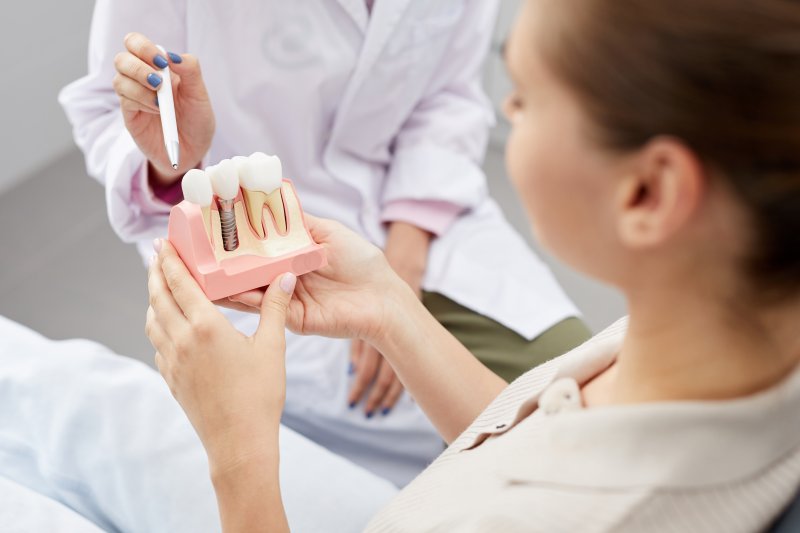
Maybe you want dental implants to treat your tooth loss. If so, you’re on the right track – these prosthetics are great at restoring smiles. That said, you ought to grasp the basics about them first. You’ll then have an idea of what treatment involves. Such knowledge is crucial, as it ensures you get your desired results. Luckily, your Vista dentist can give you a crash course. Here are four dental implant terms you should know ahead of treatment.
Implant
If you don’t know what an “implant” is, you’ll basically go into treatment blind. That’s a recipe for disaster. So, make sure you learn the definition.
In short, a dental implant is a small titanium post. A dentist places it in your jawbone as a substitute tooth root. Once set in its socket, the device will slowly become a permanent part of your mouth. It’ll then support a proper dental prosthesis. (The latter may be a bridge, dental crown, denture, or other restoration.)
Osseointegration
Key to how an implant works is a concept known as “osseointegration.” This word refers to a process that ensures your new tooth’s success.
In simple terms, osseointegration is the slow fusion of your implant with your jaw. This meaning comes from Greek and Latin words that mean “bone” and “to make whole.” So, the fusion process is how bone tissue holds your implants in place. The newly-grown bits of your jawbone keep the prosthetics stable and secure.
Abutment Teeth
Maybe you’ve already learned about implant abutments. Well, you’ll also want to know about abutment teeth. These pearly whites tend to play a similar role.
Abutment teeth are ones that support a bridge or partial denture. In most cases, they’re natural chompers that attach to a larger device via dental crowns. However, implants act as abutment teeth for implant bridges and dentures. The posts firmly secure the larger prosthetic in these latter cases.
All-on-4 Implants
All-on-4 implants act a lot like regular ones. Even so, they still play a special role that the standard posts don’t.
To be exact, All-on-4 implants are those that secure a complete denture. A dentist usually places four of them in the densest parts of a patient’s jawbone. That way, treatment can avoid preliminary work like bone grafts. You could then obtain a full smile in a highly shortened timeframe.
You’ll be well-prepared for your new teeth when you learn the dental implant terms you should know. So, make sure to remember the ones above!
About the Author
Dr. Bita Farhoumand is a periodontist based in Vista, CA. Since earning her DDS from the UCLA School of Dentistry, she’s always strived to meet her patients’ periodontal needs. That means she offers standard gum disease treatments, tissue grafts, bone grafts, and more. Of course, her office also provides some of the best dental implants around. Dr. Farhoumand currently practices at her self-titled clinic and is reachable on her website and by phone at (760)-470-4664.
 (760) 470-4664
(760) 470-4664



